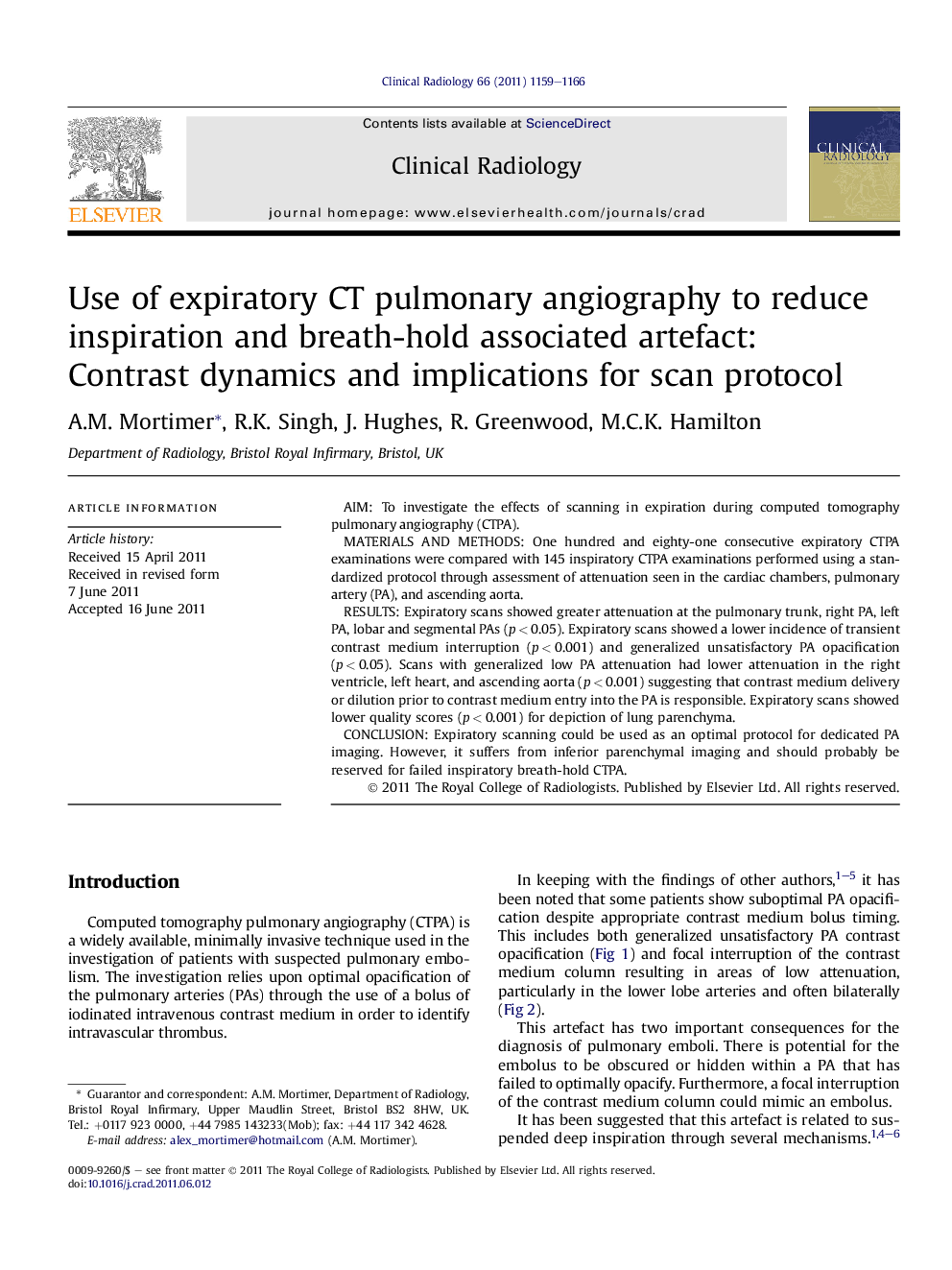| Article ID | Journal | Published Year | Pages | File Type |
|---|---|---|---|---|
| 3982409 | Clinical Radiology | 2011 | 8 Pages |
AimTo investigate the effects of scanning in expiration during computed tomography pulmonary angiography (CTPA).Materials and methodsOne hundred and eighty-one consecutive expiratory CTPA examinations were compared with 145 inspiratory CTPA examinations performed using a standardized protocol through assessment of attenuation seen in the cardiac chambers, pulmonary artery (PA), and ascending aorta.ResultsExpiratory scans showed greater attenuation at the pulmonary trunk, right PA, left PA, lobar and segmental PAs (p < 0.05). Expiratory scans showed a lower incidence of transient contrast medium interruption (p < 0.001) and generalized unsatisfactory PA opacification (p < 0.05). Scans with generalized low PA attenuation had lower attenuation in the right ventricle, left heart, and ascending aorta (p < 0.001) suggesting that contrast medium delivery or dilution prior to contrast medium entry into the PA is responsible. Expiratory scans showed lower quality scores (p < 0.001) for depiction of lung parenchyma.ConclusionExpiratory scanning could be used as an optimal protocol for dedicated PA imaging. However, it suffers from inferior parenchymal imaging and should probably be reserved for failed inspiratory breath-hold CTPA.
